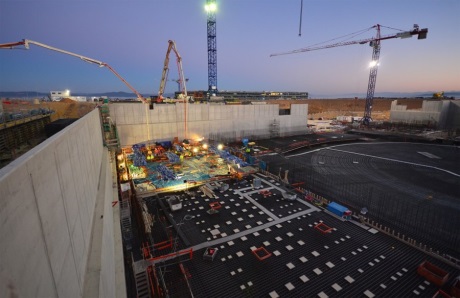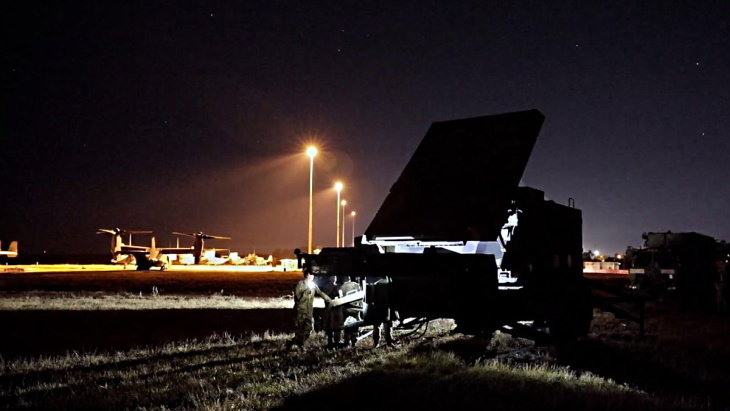The first concrete has been poured for the basemat of the Tokamak complex of the Iter fusion reactor project at Cadarache in southern France.
 |
| The first concrete is poured for the Tokamak complex (Image: Iter Organization) |
Concrete started to be poured at 6.24am on 11 December. Over the following twelve hours, some 820 cubic metres of concrete were poured into the first "plot" of the seismic pit for the Tokamak complex. A total of fifteen plots will be poured over the next six months to complete the 1.5 metres thick B2 slab. In all, 15,000 cubic metres of concrete and 4000 tonnes of reinforcement will be needed for the slab.
"This is the beginning of the B2 basemat slab realization, and as I savour the moment I measure all of the work and effort that it has taken to reach this point."
Laurent Patisson,
Iter Organization
The Tokamak complex will house the Iter fusion reactor as well as diagnostic and tritium management systems. It will be 120 metres long and 80 metres in height and width. This is to be supported on anti-seismic bearings which are already in place to support the 23,000 tonne mass of the reactor system.
Leader of Iter's nuclear buildings section Laurent Patisson said, "We are all very happy and may I say relieved to have reached this important and visible milestone for the Iter project. This is the beginning of the B2 basemat slab realization, and as I savour the moment I measure all of the work and effort that it has taken to reach this point." He added, "The concrete qualified for the B2 basemat has been the object of particular care, answering to the rigorous requirements of a nuclear facility in terms of stability, water permeability and gas confinement."
Laurent Schmieder, head of buildings, construction and power supplies at Iter's European domestic agency, Fusion for Energy (F4E), commented, "The coming years will be challenging because of our tight schedule and high technical requirements. Safety and nuclear security remain our two main commitments and priorities."
The Iter project is meant to take nuclear fusion research to a new level with the largest ever Tokamak unit, which should be capable of sustaining plasmas that produce 500 MWt for as long as seven minutes. The EU is funding half of the cost while the remainder comes in equal parts from the other partners: China, Japan, India, Russia, South Korea and the USA.
After five years of gradual site preparation, construction was officially authorised in November last year. A contract, worth €500 million ($687 million), was awarded in January to a seven-company consortium called VFR for the construction of some of the buildings on the site, including the central Tokamak complex.
The facility is expected to reach full operation in 2027.
Researched and written
by World Nuclear News





_69218.jpg)

_50545.jpg)
_28367.jpg)
_76087_55556.jpg)




